-
 Bitcoin
Bitcoin $118900
0.42% -
 Ethereum
Ethereum $3710
-2.88% -
 XRP
XRP $3.513
-2.96% -
 Tether USDt
Tether USDt $1.000
-0.01% -
 Solana
Solana $203.0
3.65% -
 BNB
BNB $765.5
-1.29% -
 USDC
USDC $0.9998
0.00% -
 Dogecoin
Dogecoin $0.2671
-4.18% -
 Cardano
Cardano $0.8817
-3.63% -
 TRON
TRON $0.3139
-0.64% -
 Hyperliquid
Hyperliquid $44.34
-5.45% -
 Stellar
Stellar $0.4637
-4.08% -
 Sui
Sui $3.908
-2.59% -
 Chainlink
Chainlink $19.34
-2.62% -
 Hedera
Hedera $0.2712
-3.77% -
 Avalanche
Avalanche $24.97
-4.13% -
 Bitcoin Cash
Bitcoin Cash $519.8
-1.48% -
 Shiba Inu
Shiba Inu $0.00001518
-3.74% -
 Litecoin
Litecoin $115.6
-2.21% -
 Toncoin
Toncoin $3.460
3.68% -
 UNUS SED LEO
UNUS SED LEO $8.977
-0.07% -
 Polkadot
Polkadot $4.460
-2.96% -
 Uniswap
Uniswap $10.53
-5.43% -
 Ethena USDe
Ethena USDe $1.001
0.01% -
 Monero
Monero $323.6
-0.36% -
 Pepe
Pepe $0.00001379
-2.60% -
 Bitget Token
Bitget Token $4.772
-3.90% -
 Dai
Dai $0.9999
0.00% -
 Aave
Aave $307.5
-6.66% -
 Bittensor
Bittensor $441.8
0.84%
How to set a Coinbase contract conditional order? How to fill in the trigger price and commission price?
To set a Coinbase conditional order, log in, select your asset, choose order type, set trigger and commission prices, then review and confirm your order.
May 04, 2025 at 08:43 pm
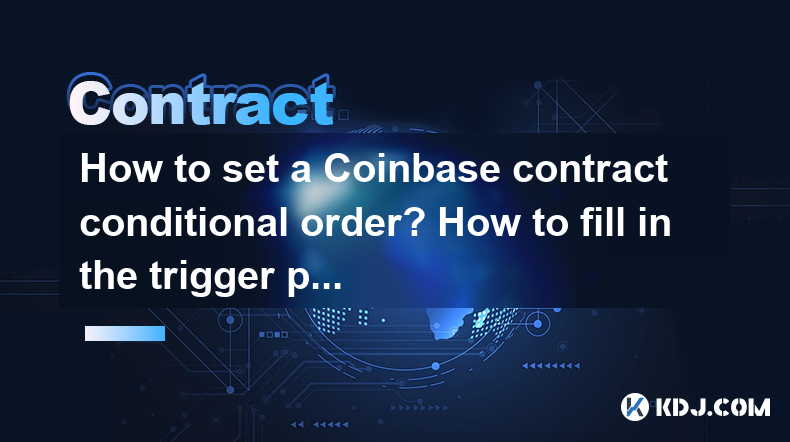
Setting a Coinbase contract conditional order involves understanding the mechanics of the platform, the types of orders available, and how to configure them effectively. In this article, we will delve into the steps required to set up a conditional order on Coinbase, focusing specifically on how to fill in the trigger price and commission price.
Understanding Conditional Orders on Coinbase
Conditional orders on Coinbase are designed to execute trades automatically when specific conditions are met. These conditions are based on price levels, allowing traders to capitalize on market movements without constant monitoring. There are primarily two types of conditional orders: stop orders and limit orders. A stop order is triggered when the market price reaches a specified level, whereas a limit order is executed at a specified price or better.
Types of Conditional Orders
Stop Orders are used to limit losses or protect profits. A stop-loss order is placed below the current market price to sell an asset if its price drops to a certain level, thus limiting potential losses. Conversely, a take-profit order is set above the current market price to sell an asset when its price rises to a desired level, locking in profits.
Limit Orders allow you to set a specific price at which you want to buy or sell an asset. A buy limit order is placed below the current market price, and a sell limit order is placed above it. These orders ensure that you buy or sell at your desired price or better.
Setting Up a Conditional Order on Coinbase
To set up a conditional order on Coinbase, follow these detailed steps:
- Log into your Coinbase account: Ensure you are logged into your Coinbase account with the necessary permissions to trade.
- Navigate to the trading page: Go to the trading section of the Coinbase platform where you can view the market and place orders.
- Select the asset: Choose the cryptocurrency you wish to trade. Ensure the trading pair is correctly selected.
- Choose the order type: Click on the "Order" button and select "Conditional Order" from the dropdown menu.
- Select the conditional order type: Decide whether you want to place a stop order or a limit order.
- Fill in the trigger price: This is the price at which your order will be activated. For a stop order, this is the price at which your order will be converted into a market order. For a limit order, this is the price at which your order will be placed on the order book.
- Set the commission price: This is the price at which your order will be executed once it is triggered. For stop orders, this is typically the market price at the time of triggering. For limit orders, this is the price you set as the limit.
- Review and confirm: Double-check all the details of your order, including the trigger price and commission price. Once satisfied, submit the order.
Filling in the Trigger Price
The trigger price is a critical component of a conditional order. It determines when your order will be activated. When setting the trigger price, consider the following:
- Market volatility: In highly volatile markets, setting a trigger price too close to the current market price may result in your order being triggered too frequently. Conversely, setting it too far may result in missing out on potential trades.
- Trading strategy: Your trigger price should align with your overall trading strategy. If you are looking to protect profits, set the trigger price at a level that ensures you lock in gains. If you are aiming to limit losses, set it at a level that minimizes potential downside.
- Historical data: Analyzing historical price data can help you determine an appropriate trigger price. Look at past price movements to identify levels where the market has shown significant reactions.
Filling in the Commission Price
The commission price is the price at which your order will be executed once triggered. For stop orders, this is typically the market price at the time of triggering. For limit orders, this is the price you set as the limit. Here are some considerations when filling in the commission price:
- Slippage: In fast-moving markets, the actual execution price may differ from the commission price you set, especially for stop orders. This is known as slippage. To mitigate this, consider setting a slightly wider range for your commission price.
- Order type: For limit orders, the commission price is crucial as it determines the maximum or minimum price at which you are willing to buy or sell. Ensure this price aligns with your trading goals.
- Market depth: The depth of the order book can affect the execution of your order. If there is low liquidity at your chosen commission price, your order may not be filled as expected. Monitor the order book to ensure there is sufficient liquidity at your desired price level.
Monitoring and Adjusting Your Conditional Orders
Once your conditional order is placed, it is essential to monitor its status and make adjustments as needed. Here are some tips for effective monitoring:
- Regularly check your order status: Log into your Coinbase account periodically to review the status of your conditional orders. Ensure they are still aligned with your trading strategy.
- Adjust trigger and commission prices: If market conditions change, you may need to adjust the trigger and commission prices of your orders. This can be done by canceling the existing order and placing a new one with updated prices.
- Stay informed: Keep up-to-date with market news and events that could impact the price of the assets you are trading. This information can help you make more informed decisions about your conditional orders.
Common Mistakes to Avoid
When setting up conditional orders, there are several common mistakes to avoid:
- Setting unrealistic trigger prices: Ensure your trigger prices are realistic and based on market conditions. Setting them too far from the current market price can result in missed opportunities.
- Ignoring market volatility: Failing to account for market volatility can lead to orders being triggered too frequently or not at all. Always consider the current market environment when setting your orders.
- Not reviewing orders regularly: Conditional orders should be reviewed regularly to ensure they remain aligned with your trading strategy. Neglecting to do so can result in unexpected outcomes.
FAQs
Q1: Can I cancel a conditional order after it has been placed?
Yes, you can cancel a conditional order at any time before it is triggered. To do so, navigate to the "Orders" section of your Coinbase account, find the conditional order you wish to cancel, and click on the "Cancel" button.
Q2: What happens if the market price gaps through my trigger price?
If the market price gaps through your trigger price, your stop order will be executed at the next available market price, which may result in slippage. For limit orders, if the market price gaps through your limit price, your order may not be filled until the market price returns to your specified limit price.
Q3: Can I place conditional orders on all cryptocurrencies available on Coinbase?
Conditional orders are available for most cryptocurrencies on Coinbase, but availability may vary depending on the trading pair and market conditions. Always check the specific asset you are interested in to confirm if conditional orders are supported.
Q4: How does Coinbase handle partial fills for conditional orders?
Coinbase may allow partial fills for conditional orders, depending on the order type and market conditions. If your order is partially filled, the remaining portion will stay active until it is fully executed or canceled. Always review the order details to understand how partial fills are handled for your specific order type.
Disclaimer:info@kdj.com
The information provided is not trading advice. kdj.com does not assume any responsibility for any investments made based on the information provided in this article. Cryptocurrencies are highly volatile and it is highly recommended that you invest with caution after thorough research!
If you believe that the content used on this website infringes your copyright, please contact us immediately (info@kdj.com) and we will delete it promptly.
- SEC, Bitcoin, and Crypto: Navigating the Wild West of Digital Finance
- 2025-07-23 04:30:12
- Solana NFTs Surge: Riding the Wave of Market Volume and NFT Hype
- 2025-07-23 04:30:12
- Wall Street Pepe (WEPE) and the Solana Meme Coin Mania: A New Era?
- 2025-07-23 03:30:13
- Rare Coin Frenzy: Bidding Wars and the Pocket Change Revolution
- 2025-07-23 02:50:13
- Tokens with Growth Potential & Low Risk: Navigating the Crypto Landscape
- 2025-07-23 03:50:12
- Pepe Dollar, Solaxy, and Meme Utility: A New Yorker's Take on Crypto's Cutting Edge
- 2025-07-23 02:50:13
Related knowledge

How to trade ETH perpetuals on Bitstamp?
Jul 23,2025 at 03:28am
Understanding ETH Perpetual ContractsETH perpetual contracts are derivative products that allow traders to speculate on the price of Ethereum without ...
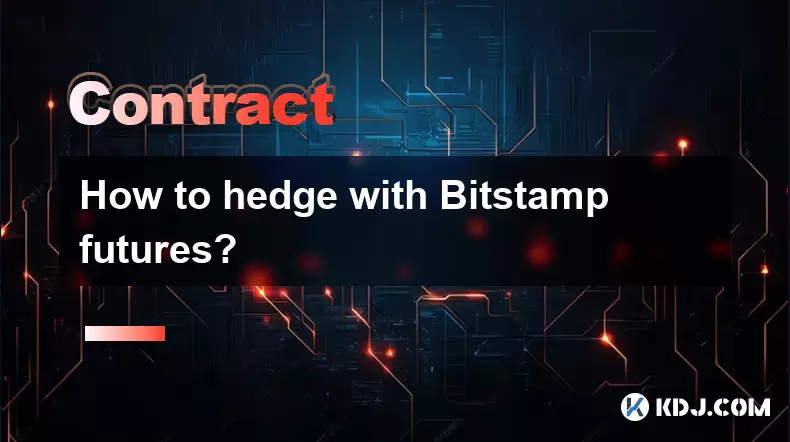
How to hedge with Bitstamp futures?
Jul 23,2025 at 02:00am
Understanding Bitstamp Futures ContractsBitstamp futures are financial derivatives that allow traders to speculate on or hedge against the future pric...
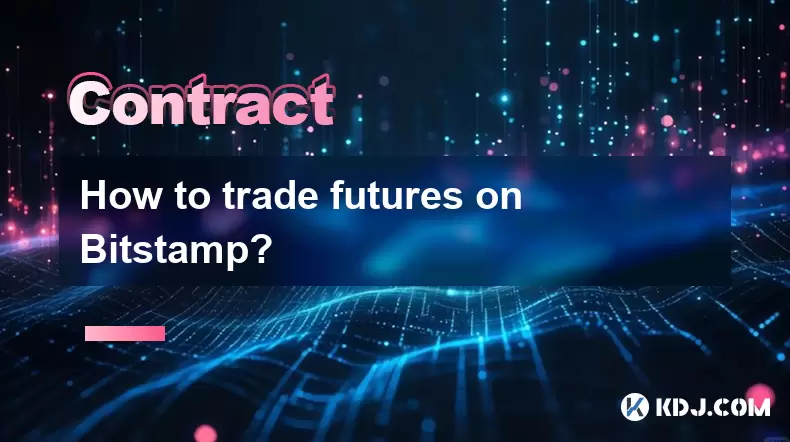
How to trade futures on Bitstamp?
Jul 23,2025 at 12:56am
Understanding Bitstamp Futures TradingFutures trading on Bitstamp allows users to speculate on the future price of cryptocurrencies such as Bitcoin an...
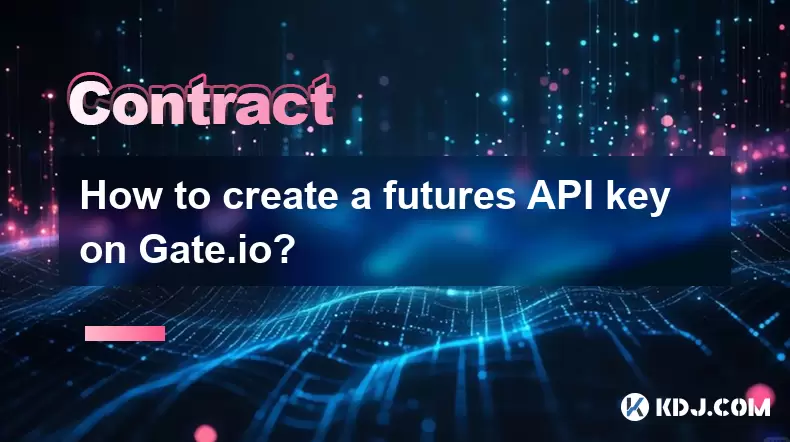
How to create a futures API key on Gate.io?
Jul 23,2025 at 03:49am
Understanding Futures API Keys on Gate.ioA futures API key on Gate.io allows traders to automate trading strategies, manage positions, and retrieve re...
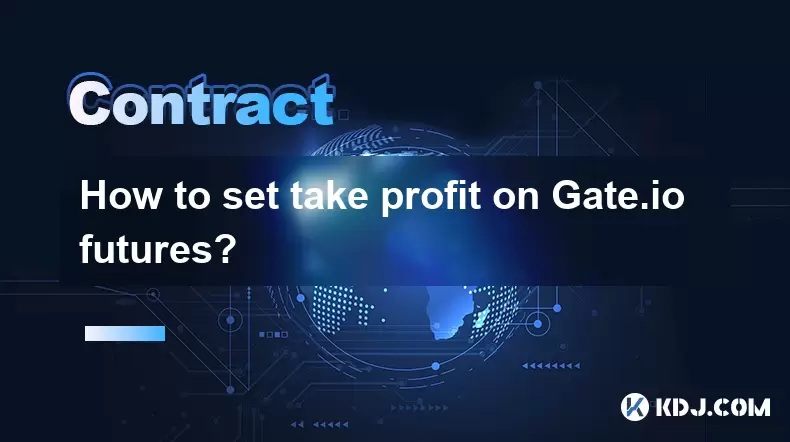
How to set take profit on Gate.io futures?
Jul 23,2025 at 01:14am
Understanding Take Profit in Gate.io FuturesWhen trading futures on Gate.io, a take profit (TP) order allows traders to automatically close a position...
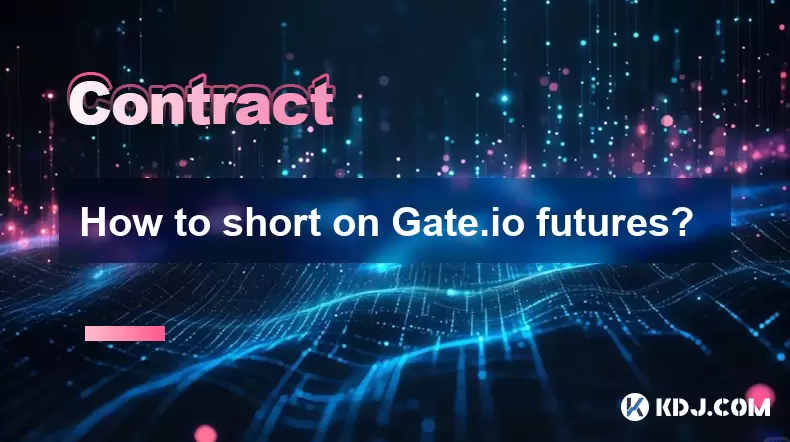
How to short on Gate.io futures?
Jul 22,2025 at 10:42pm
Understanding Futures Trading on Gate.ioFutures trading allows users to speculate on the price movement of cryptocurrencies without owning the underly...

How to trade ETH perpetuals on Bitstamp?
Jul 23,2025 at 03:28am
Understanding ETH Perpetual ContractsETH perpetual contracts are derivative products that allow traders to speculate on the price of Ethereum without ...

How to hedge with Bitstamp futures?
Jul 23,2025 at 02:00am
Understanding Bitstamp Futures ContractsBitstamp futures are financial derivatives that allow traders to speculate on or hedge against the future pric...

How to trade futures on Bitstamp?
Jul 23,2025 at 12:56am
Understanding Bitstamp Futures TradingFutures trading on Bitstamp allows users to speculate on the future price of cryptocurrencies such as Bitcoin an...

How to create a futures API key on Gate.io?
Jul 23,2025 at 03:49am
Understanding Futures API Keys on Gate.ioA futures API key on Gate.io allows traders to automate trading strategies, manage positions, and retrieve re...

How to set take profit on Gate.io futures?
Jul 23,2025 at 01:14am
Understanding Take Profit in Gate.io FuturesWhen trading futures on Gate.io, a take profit (TP) order allows traders to automatically close a position...

How to short on Gate.io futures?
Jul 22,2025 at 10:42pm
Understanding Futures Trading on Gate.ioFutures trading allows users to speculate on the price movement of cryptocurrencies without owning the underly...
See all articles




























































